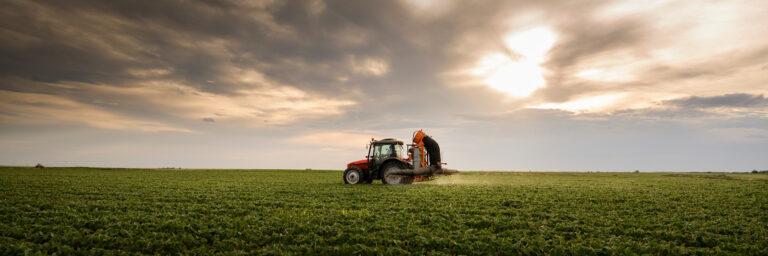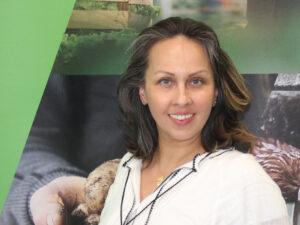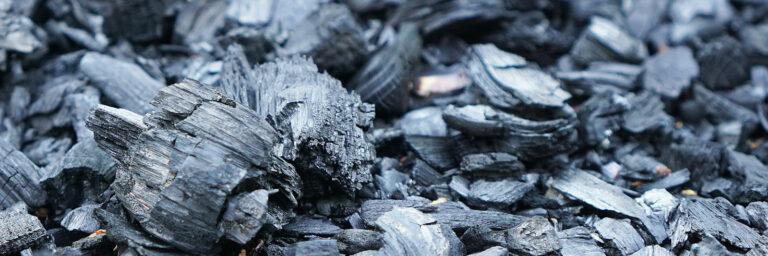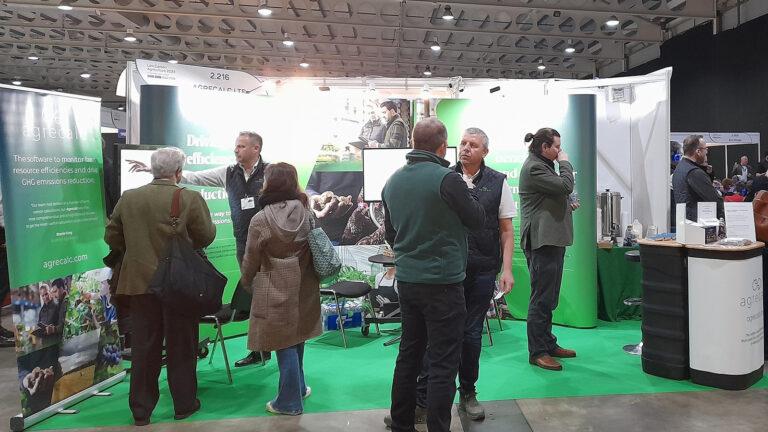
April Business Update: SRUC
After two years of operation as a Limited Company, Agrecalc became part of Scotland’s Rural College (SRUC) as of 1 April 2025.
In the last two years, the Agrecalc team has made significant strides on updating the sustainability calculator, surpassing all previous achievements and solidifying its credibility and capabilities.
In 2007, a group of passionate scientists and agricultural experts at Scotland’s Rural College (SRUC), led by Julian Bell, Senior Agricultural Consultant at SAC Consulting, came together to address the pressing issue of greenhouse gas emissions in the agriculture sector.
Spurred by the dubious claims in the press that imported lamb from New Zealand had a lower carbon footprint than the lamb produced domestically, they said – ‘hang on, that can’t be true. Let us see if we can disprove the sensationalist claims with real, peer-reviewed science’.
And Agrecalc was born, as a humble, Excel-based document, with a mission to help farmers measure and reduce their carbon footprints.
Working with the levy body AHDB and the feed sector, farm consultants started using Agrecalc for pig and poultry supply chains, and the calculator quickly gained recognition among farmers, scientific and research institutions, as well as agricultural organisations for its accurate calculations and scientifically-backed claims and mitigation options it espoused.
During this period, Agrecalc expanded its user base and forged strategic partnerships with government agencies, agricultural research institutions, and sustainable farming organisations. The sustainability calculator underwent regular updates, incorporating new data and scientific research to enhance its precision and functionality. The team actively engaged with farmers, organising workshops and providing educational resources on sustainable practices.
In 2014, the web-based version was launched, incorporating thousands of data sets, and enabling benchmarking and comparisons.
To meet the growing demand for comprehensive sustainability assessment, Agrecalc introduced additional features such as an ammonia model for use in pig and poultry farms, soil carbon sequestration module for the consultant’s use, and a number of scientific updates to match the internationally recognised standards.
The sustainability calculator evolved into a vital tool for farmers, enabling them to gain valuable insights into their farming practices and make informed decisions to reduce their environmental impact. This has gained recognition from the Scottish Government, making it the calculator to support crucial agricultural projects like Farm Advisory Service (FAS) and the Beef Efficiency Scheme.
The number of users kept doubling year after year, reaching more than 10,000 in the year 2023, and having produced more than 20,000 carbon footprint reports.
The last two years witnessed an unprecedented leap in Agrecalc’s growth and development, underscoring its commitment to revolutionise sustainable agriculture. The following milestones were accomplished:
Under the guidance of the Senior Leadership Team at SAC Consulting, and relaying on expertise of outside consultant, angel investor, and then-acting director, Angus MacFadyen, new members were brought in specifically with the task of taking Agrecalc further that it has ever been.
The following people joined Julian Bell, Business Development Lead, an agricultural consultant with thirty years of experience in agricultural industry, and Agrecalc creator:
Recognising the potential impact of their innovation, the Agrecalc team formed a standalone company dedicated solely to developing and improving sustainable agricultural software solutions. This strategic move allowed for focused attention, enhanced resources, and better support for farmers.
Understanding the importance of effective communication, Agrecalc launched a new marketing website. It showcases the features, benefits, and success stories of Agrecalc, while also serving as a knowledge hub for sustainable farming practices. The website aims to educate and engage the entire agri-food supply chain, providing credible information and building trust in Agrecalc’s capabilities.
Furthermore, the website also acts as a central hub for all the links to the product and its knowledge base, forming a complete digital ecosystem, with the aim to give prospects and customers a turn-key solution.
In July 2023, a new version of the platform, named Agrecalc Cloud, has been launched. As its name says, it combines the power of a cloud-based system with the precision carbon footprint calculations Agrecalc has been known for the last 16 years.
This platform is all about customer experience: the user interface has been streamlined and created as an intuitive system that will make the customer journey easier and faster. The improvements have been made in the back-end too, so that the calculations incorporate the latest climate science, improved mitigation measures, and enablement of new module creation as well as third-party integrations.
All of these improvements would not have been possible without the continuous collaboration and feedback from customers, advisors and the contributions from the wide agricultural community.
The Agrecalc team continues to push the boundaries of innovation, exploring avenues for further development. Here are some ideas that are included in our future plans:
Agrecalc has come a long way since its inception, transforming into a prominent player in the field of sustainable agriculture. The last two years have witnessed remarkable advancements, including the formation of a standalone company, the development of a cloud-based software version, and the launch of a new marketing website. With its unwavering dedication to innovation and sustainability, Agrecalc stands as a credible and capable partner for all the actors within the agri-food supply chain looking to make a positive impact on their environment.

Former journalist, now SEO writer and Head of Marketing, combining two great loves of content creation and tech. In charge of turning Agrecalc marketing vision into strategy and tangible assets.

After two years of operation as a Limited Company, Agrecalc became part of Scotland’s Rural College (SRUC) as of 1 April 2025.

Biochar is a carbon-rich material produced by pyrolysing biomass, which offers a variety of potential agronomic benefits. In this guest article, Black Bull Biochar discusses how these effects work together to bolster productivity, sustainability, and resilience in farming.

The Agrecalc team is looking forward to welcoming you at our stand (2.844) at this year’s Low Carbon Agriculture Show, taking place on March 5 and 6, at NAEC Stoneleigh near Kenilworth.